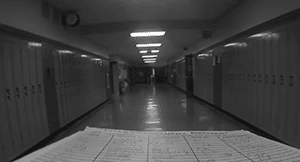
The topic of school safety naturally inspires strong emotions, wide-ranging opinions, and solutions, each with the same goal in mind: protect people in schools.
Everyone deserves to learn and serve in a school where they feel safe. Unfortunately, no school exists in a vacuum. No single person, be it a superintendent, principal, teacher, parent, politician, scientist, or blog writer, can come up with the exact formula for flawless protection. Instead, we can all contribute to two critical areas: pragmatic planning and proactive outreach.
No one wants to put their school safety plans into action. But failure to prepare is inexcusable. Let’s look at the ways we can begin to do better.
1. Plan and communicate
When we talk about school safety, the looming threat on most minds is mass shootings—deadly attacks are impossible to forget. However, safety threats don’t end there.Imagine a student has a violent outburst, throws objects, or assaults someone. Who has a better chance of diffusing the situation faster: a bewildered teacher completely caught off-guard, or a teacher who has been trained and knows administrators support them? What will happen if the school must be evacuated due to gas leak nearby, a refinery explosion in town, or an active attacker? How will staff react, and how will parents receive notification?
When staff are empowered to approach every situation with consistency, parents can trust everyone to react appropriately. Safety is no longer a mystery or a secret. And there are no surprises to post on social media. In times of crisis, school PR professionals can provide invaluable service as a point person for media inquiries and as coaches for the first line of communication in the school office. A consistent message communicated with clarity and timeliness will mitigate panic and discord.
Action items:
- Hire a PR pro with crisis communication training.
- Develop clear, accessible protocols for anticipated scenarios.
- Review your emergency notification strategies and tech.
2. Build relationships
How do districts create a strong relationship with local law enforcement? We spoke to Lieutenant Richard Hoege of the Portage Police Department in Portage, Wisconsin, about the benefits of welcoming officers and keeping communication open.Lieutenant Hoege has worked with students and staff at all levels of K–12 schools. He finds schools are receptive to having officers walk the halls. Officers can offer service and guidance, visiting drivers’ education or health classes to talk about consequences and accidents or discussing civil rights in a social studies class.
“Allow officers the opportunity to make contact with students and teachers to realize they’re a resource, not a punitive part of the judicial system,” he says.
Officers familiar with your school district can also serve as invaluable resources for crisis response planning. Lieutenant Hoege emphasizes the importance of inviting many voices to the table when planning a crisis response, including district leaders, school nurses, and guidance staff. Invite fire fighters, EMS, city administrators, and the department of public works to manage safe avenues around the schools.
“A good, strong school district will create vital communities, and vital communities know the importance of having extremely well-supported schools,” Lieutenant Hoege says.
His advice for planning includes staying focused on the goals at hand. Unless forced to shelter in place, move people away from the threat and evacuate. After evacuation, move to a predetermined meeting point. Planning should center around those goals regardless of the threat forcing evacuation. What can each person do to support them?
Once a plan is in place, practice. “You can put on paper a procedure that may have zero application to real world dynamics,” Lieutenant Hoege says. “Until you test or drill the procedure, you’ll never know what the weakest link or shortcomings are.”
Action items:
- Integrate officers into school culture with planned, positive student interactions.
- Invite law enforcement, health professionals, and municipal voices to the planning table.
- Identify, communicate, and practice rendezvous protocols for all campuses and multiple scenarios.
3. Get proactive about mental health
Research tells us up to 20% of students experience mental health problems—unfortunately, 60% do not receive treatment. How can district leaders step in to make a difference with resources already stretched? The National Association of School Psychologists recommends each school psychologist should serve no more than 700 students in order to provide preventative, comprehensive intervention. In reality, NASP estimates most school psychologists serve over 1,300 students.Many districts have adopted multi-tiered systems of supports (MTSS) for mental health mimicking response to intervention tiers. All students receive mental health education as part of a tier one population. Then students needing intervention move between tiers to receive individualized treatment. Districts may even blend Positive Behavior Interventions and Supports (PBIS) with proactive mental health. The Interconnected Systems framework offers implementation considerations and tools.
The process depends on a leadership team’s willingness and ability to define measurable goals and craft a specific plan tailored to students’ needs.
Action items:
- Conduct a time study with your school psychologists with the end goal of maximizing the number of hours they spend interacting directly with kids.
- Work with mental health professionals to craft a sound MTSS program or update your existing processes.
- Document consistent protocols for “red flag” behavior with an emphasis on limiting the potential for violence.
4. Supplement with technology
Biometric security is attractive because it determines identity based on who you are, rather than something you know (passwords and PINs) or have (badges). It is much more difficult to share, steal, or lose biology than knowledge or belongings, making biometrics a worthy component of multifactor identification. Fingerprints are one of the most common examples of biometric measurement—everyone’s unique prints are synonymous with identity, dating all the way back to 1858 when they were first used as signatures during the British occupation of India. Because it’s a widespread use of biometric measurement, fingerprint scanners are becoming more affordable for districts (some even use them as timeclocks).
Today even cell phones are capable of facial recognition. In fact, Apple claims the odds of another face matching a user’s FaceID is one in one million (TouchID is closer to one in 150,000). Outside of cost, there are still obstacles to facial recognition: the lack of diversity in the tech industry resulted in code being written with unreliable recognition for people of color.
Unsafe classroom doors pose a more immediate challenge to building security. Costs to retrofit classroom doors with compliant locks can reach up to $350 per door, increasing exploration of low-cost ways to build barricades. Some commercially available locks seem safe, but in practice could lead to more risk. Before investing, ensure the device meets ADA requirements and would not unintentionally trap someone who is unable to reach the floor or the top of the door.
Action items:
- Investigate affordable biometrics.
- Explore emerging security solutions with an open mind and a critical eye.
School safety can be improved by practicing with a deceptively simple goal in mind: Do everything possible to keep students secure, mentally and physically. If the day comes when you can’t, get out quickly and meet someplace safe. All plans begin and end with this idea in mind.
Follow-up Resource: Design Thinking for School Leaders
When faced with a complex problem, where do you start? Here's a breakdown of applying design thinking to district dilemmas large and small.WHAT'S NEXT FOR YOUR EDTECH? The right combo of tools & support retains staff and serves students better. We'd love to help. Visit skyward.com/get-started to learn more.

|
Erin Werra Blogger, Researcher, and Edvocate |
Erin Werra is a content writer and strategist at Skyward’s Advancing K12 blog. Her writing about K12 edtech, data, security, social-emotional learning, and leadership has appeared in THE Journal, District Administration, eSchool News, and more. She enjoys puzzling over details to make K12 edtech info accessible for all. Outside of edtech, she’s waxing poetic about motherhood, personality traits, and self-growth.




